UNDERSTANDING WHY YOUR FURRY COMPANION SHAKES
Observing a dog shake is a common occurrence for many pet owners.
This behavior, often bewildering and concerning, can lead to numerous questions about the underlying causes.
Understanding why a furry companion shakes is paramount in ensuring their health and well-being.
Reasons Why Do Dogs Shake
The reasons behind a dog’s shaking can be varied, ranging from benign factors to more serious health issues, necessitating a thorough investigation. For instance, simple reasons like excitement or a response to cold weather can cause a dog to tremble. Excitable dogs might shake due to heightened emotions during play or seeing their owners after a long day. Similarly, when experiencing cold temperatures, dogs, much like humans, might shiver as a mechanism to generate body heat. Conversely, more serious concerns such as medical conditions or emotional distress might also be the culprit.
Dogs Do Shake from Health Conditions and Emotional Factors
Conditions like hypoglycemia, poisoning, and other serious ailments can manifest through shaking. Emotional factors, including fear, anxiety, and stress, can similarly induce trembling in dogs.
Understanding these potential causes is essential in discerning whether the shaking is harmless or indicative of a more pressing issue. Thus, recognizing and addressing the reasons for a dog’s trembling is not merely about observation but requires a vigilant approach to ensure effective care. By comprehensively understanding the spectrum of factors that can lead to shaking, pet owners can take informed steps to maintain the health and happiness of their canine companions.
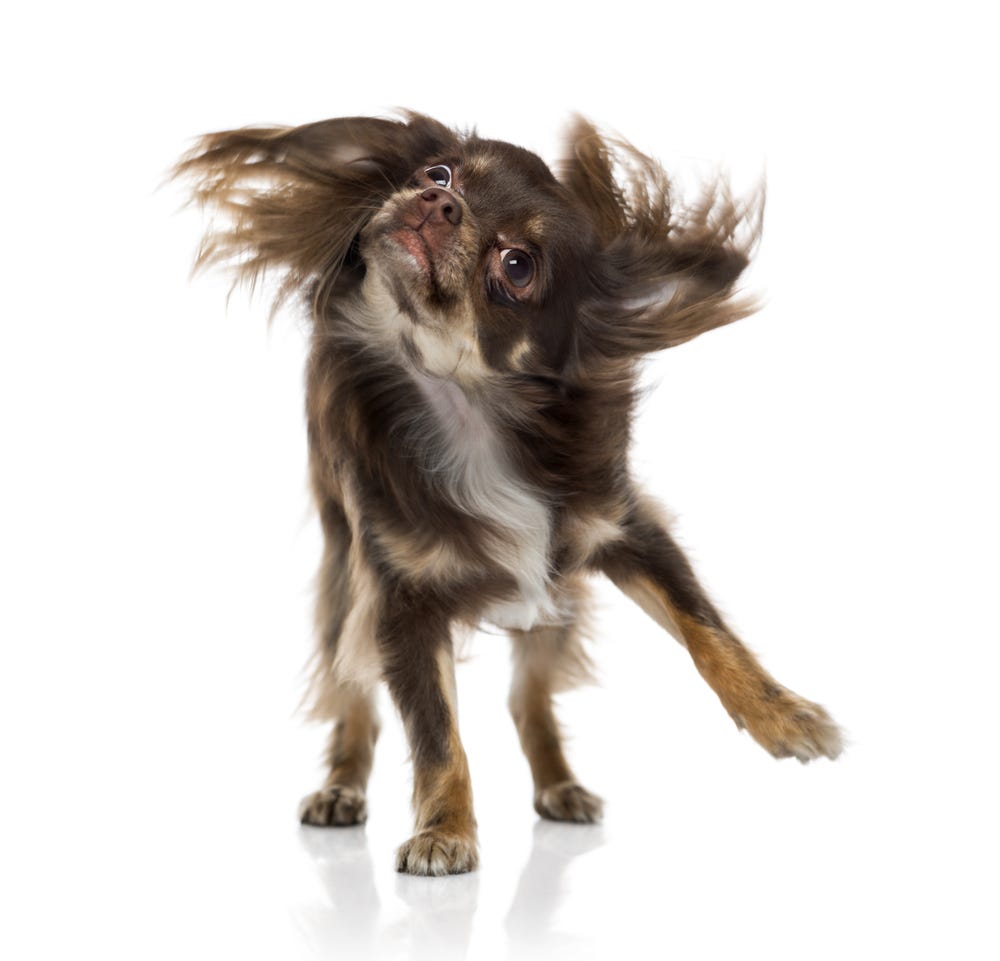
COMMON NON-THREATENING CAUSES OF DOG SHAKING
There are various reasons why dogs may shake, and not all of them indicate a serious health issue. One primary and benign cause of shaking in dogs is excitement.
Just like humans, dogs can become overly joyous or stimulated, causing their bodies to tremble.
Excitement, Arousal and Cold Weather Cause Dog Shaking
For instance, when you come home after being away, your dog might express their delight by wagging their tail vigorously and shaking. This type of shaking is generally short-lived and subsides once the initial excitement wears off.
Playfulness can also induce shaking in dogs. During play, dogs often engage in behaviors that trigger shakes and tremors. This can be particularly noticeable when dogs engage in rough-and-tumble play with other dogs or even their owners.
The shaking in this context is part of the physical exertion and heightened arousal from the fun activity, usually stopping once playtime ends.
Another common, non-threatening reason for dog shaking is cold weather. Dogs, especially those with shorter fur, are prone to trembling when exposed to cool temperatures.
This type of shaking is a natural response to cold and serves to generate body heat, similar to human shivering. Providing a warm blanket or a suitable sweater for your dog can mitigate this type of shaking.
Non-Threatening Dog Shaking Do Not Require Veterinary Attention
These examples of non-threatening dog shaking are typically observed in everyday scenarios. When a dog shakes out of excitement, it may be wagging its tail, jumping around, or barking joyfully. The playfulness-induced shaking is often interspersed with running, playing fetch, or engaging in wrestling-like behaviors. Cold weather shaking can be seen when the ambient temperature drops, and the dog may seek warm spots or try to burrow for comfort.
Understanding these non-threatening causes of dog shaking helps pet owners distinguish between normal behavior and signs that might require veterinary attention.
Recognizing that excitement, playfulness, and cold are typical reasons for dog shaking ensures that owners can respond appropriately and avoid unnecessary concerns.

FEAR AND ANXIETY: EMOTIONAL TRIGGERS FOR DOG SHAKING
Understanding the emotional triggers that cause your furry companion to shake involves recognizing how fear, anxiety, and stress affect dogs.
Just like humans, dogs can experience intense emotions that manifest physically, leading to visible tremors or shaking.
Dog Shaking Induced from A Flight-Or-Fight Response
Common triggers for such emotional responses include loud noises like thunderstorms and fireworks, as well as unfamiliar environments and situations. Each of these scenarios can significantly impact a dog’s nervous system, inducing a flight-or-fight response. When a dog encounters a stressful situation, their sympathetic nervous system releases adrenaline. This hormone prepares their body for perceived danger, resulting in physical reactions such as shaking.
For instance, during a thunderstorm, the unfamiliar and loud sounds can overwhelm a dog’s senses, leading to a heightened state of anxiety.
Similarly, fireworks with their sudden and unpredictable bursts of noise can have a terrifying effect on your pet, causing them to shake in fear. New environments or changes in routine can also lead to significant stress, prompting a similar physical response.
Recognizing And Addressing the Root Cause of Dog Shaking Can Relief Your Dog Distress
Distinguishing shaking due to emotional stress from other causes involves looking at the broader context and behavior of your dog.
Signs of fear or anxiety-induced shaking often accompany other symptoms such as panting, drooling, hiding, whining, and excessive licking. The shaking tends to coincide with identifiable stressors and usually subsides once the trigger has passed.
It is crucial to differentiate this from medical conditions which might also cause tremors but are often accompanied by other physical symptoms not related to emotional states. Recognizing and addressing the root cause of these triggers can help alleviate your pet’s distress.
Providing a safe and comforting environment, using calming techniques, or consulting a veterinarian for anxiety management strategies can significantly improve their well-being. Understanding these emotional triggers and their effects is a vital step in managing your furry companion’s health and comfort.

Read and inform yourself more about Fear, Stress and Anxiety in Dogs! (Doggozila Magazine offer articles for STRESS IN DOGS, UNDERSTANDING DOG FEAR, SEPARATION ANXIETY IN DOGS AND WALK ANXIETY IN DOGS)
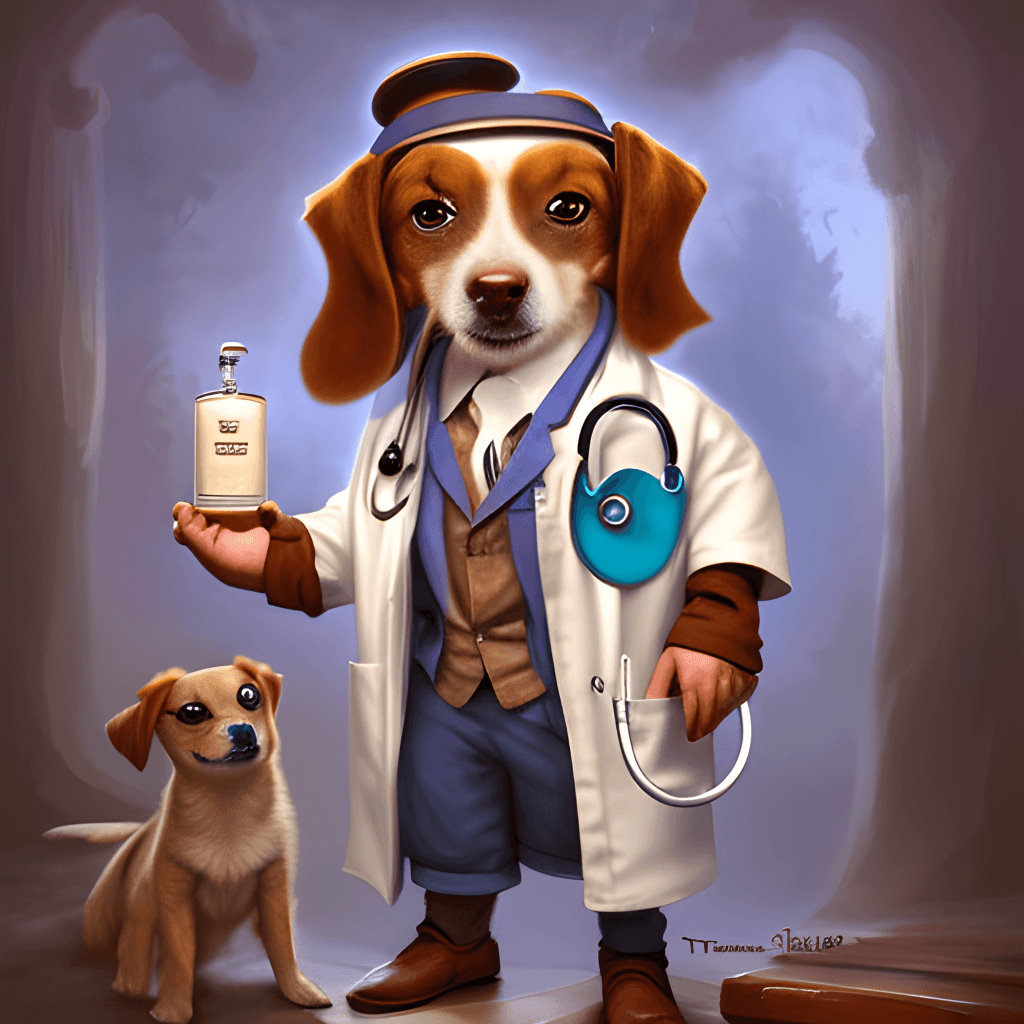
HEALTH ISSUES THAT CAUSE SHAKING IN DOGS
Health issues form a significant subset of the triggers behind a dog’s shaking.
Among medical reasons, several conditions and illnesses can manifest as tremors or shaking, necessitating immediate attention.
Neurological disorders, for instance, play a crucial role.
Involuntary Shaking in Dogs Caused from Health Conditions
Conditions such as epilepsy, cerebellar hypoplasia, and degenerative myelopathy can cause involuntary shaking in dogs. Epileptic seizures often involve shaking episodes that are visibly distressing, indicating abnormal brain activity. Pay close attention to your dog’s behavior and seek medical advice at the first indication of abnormal shaking.
Dog Shaking from Poisoning
Poisoning is another critical medical reason behind a dog’s shaking. Exposure to toxins — whether through ingestion or environmental factors — can lead to significant tremors.
Common toxins include chocolate, xylitol, and certain plants like sago palms, all of which can induce shaking as an early sign of poisoning in dogs. In cases of poisoning, swift veterinary intervention is imperative to mitigate severe complications or fatal outcomes.
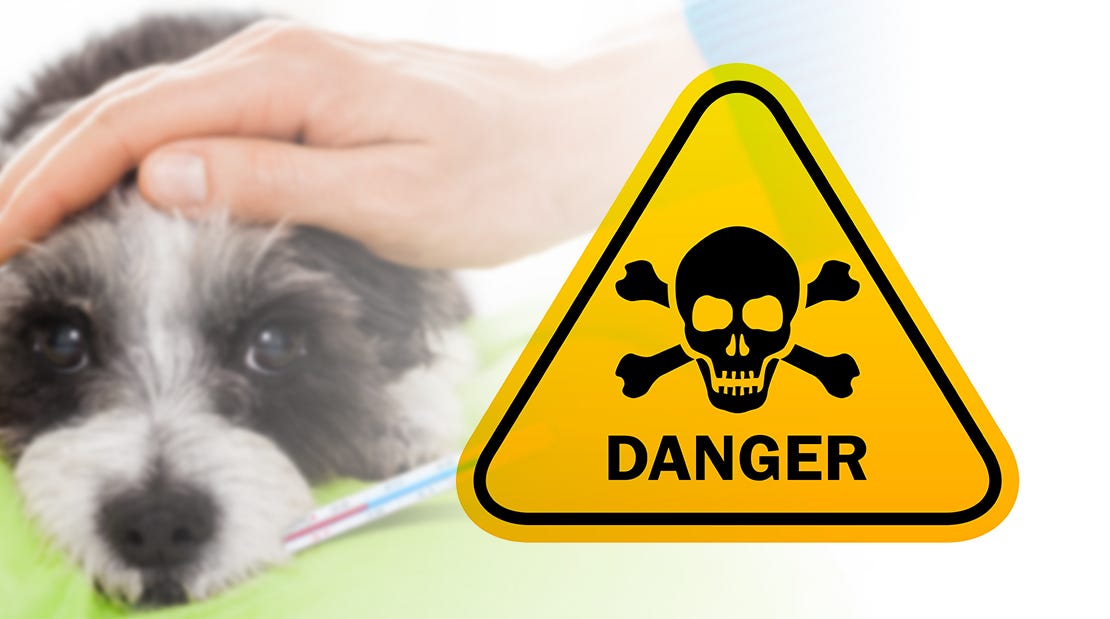
We recommend to inform yourself more about various causes of poisoning in dogs, check the dog magazine’s article from (Doggozila Magazine: plant poisoning, chocolate poisoning)
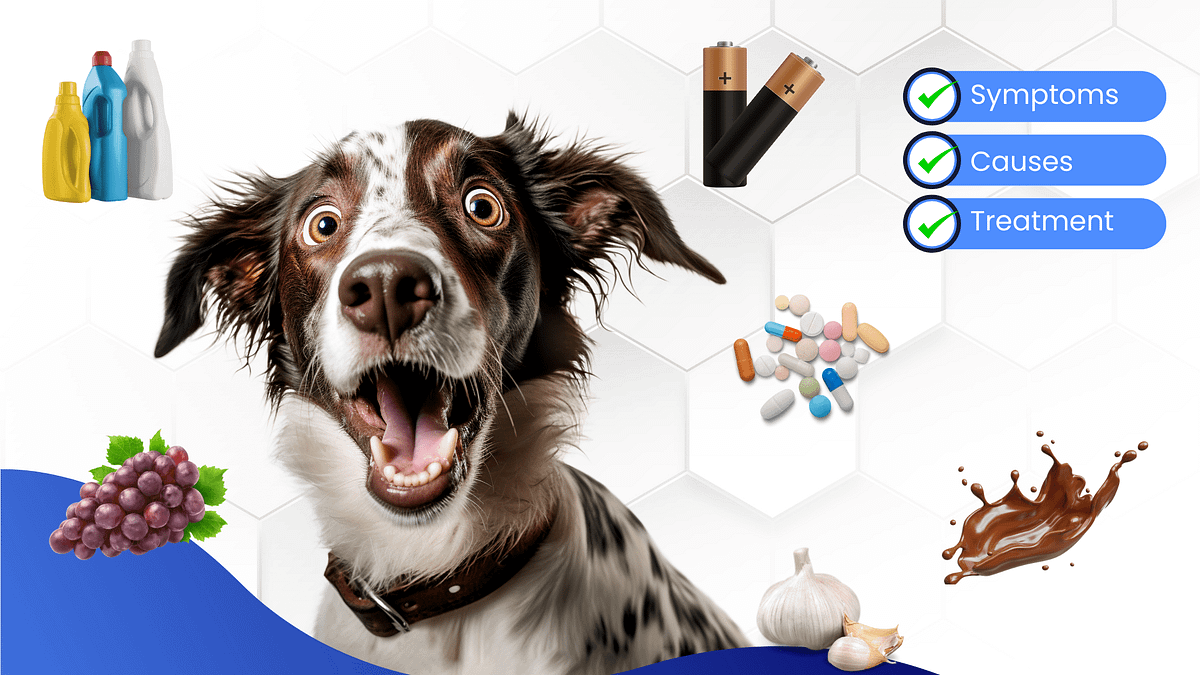
The Disease Canine Distemper Cause Shaking in Dogs
Additionally, illnesses like canine distemper contribute to shaking. Caused by a virus, distemper affects a dog’s respiratory, gastrointestinal, and nervous systems.
One of the hallmark symptoms of canine distemper is involuntary tremors, often accompanied by fever, coughing, and nasal discharge.
Early detection and treatment of distemper are vital for a favorable prognosis, as the progression of the disease can be rapid and severe.
Veterinary Guidance for Dog Shaking Caused from Health Issues
Recognizing these symptoms early can make a substantial difference in the health and well-being of your furry companion.
Prompt veterinary assistance is crucial when a dog exhibits persistent shaking. Engaging with a veterinarian can help diagnose the underlying cause and initiate the appropriate treatment plan. Monitoring your dog for additional signs, like lethargy, vomiting, or changes in behavior, combined with professional guidance, can ensure the timely care and recovery of your beloved pet.
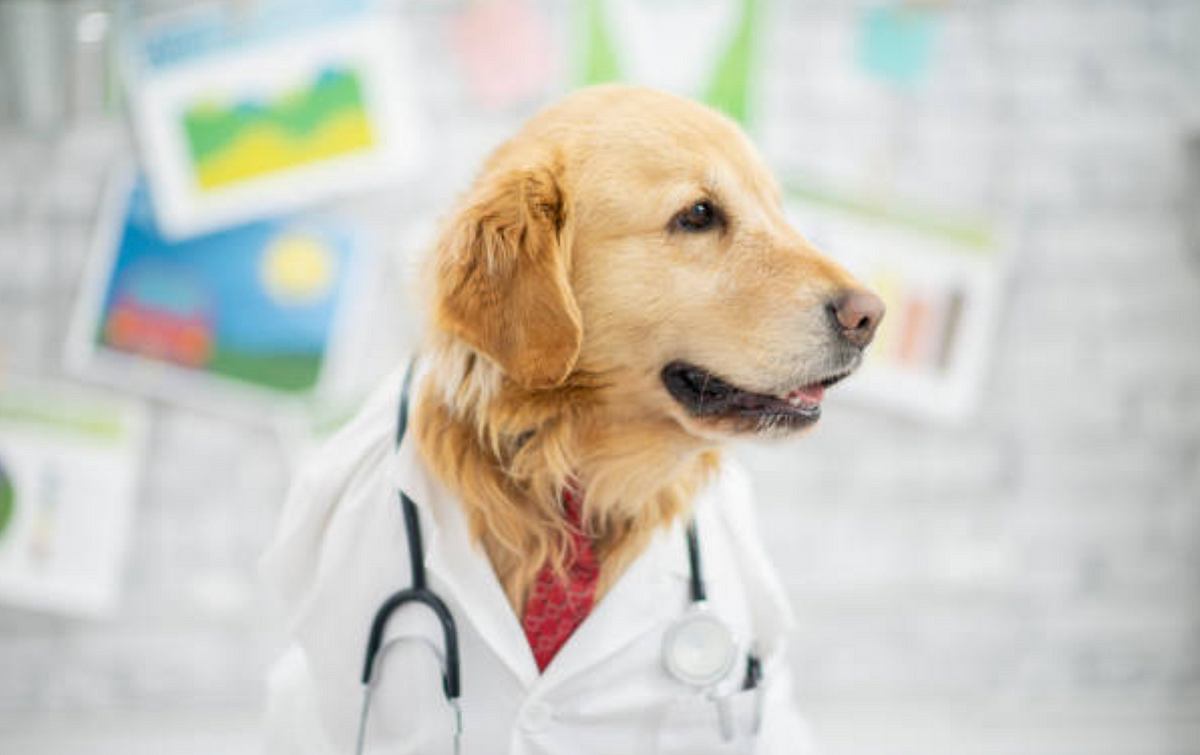
STEPS TO TAKE WHEN YOUR DOG SHAKES
If you observe your furry companion shaking, there are several steps you can take to address the situation effectively.
First and foremost, it is essential to monitor your dog’s behavior closely. Take note of the frequency, duration, and circumstances under which the shaking occurs. Is it happening during certain activities, after meals, or when exposed to specific environments? Detailed observations can provide critical insights into potential triggers and underlying causes.
First Step: Stay Calm and Create Safe Space for Your Dog
Maintaining a calm environment is equally important. Dogs are highly sensitive to their surroundings, and a stressful atmosphere can exacerbate their symptoms.
Ensure that your pet’s space is tranquil and free from any external stressors. Simple actions, such as softening the noise levels in the home or providing a serene retreat, can significantly impact their well-being.
Second Step: Maintain Consistency
Another crucial step involves avoiding any abrupt changes in your dog’s routine. Stability and predictability often contribute to a dog’s sense of security.
Abrupt dietary changes, alterations in daily schedules, or introducing unfamiliar elements into their environment can heighten their stress levels and potentially worsen the shaking. Consistency is key to creating a comforting space for your canine companion.
Third Step: Call Your Veterinarian
It goes without saying that professional guidance is indispensable. If the shaking persists, it is imperative to contact your veterinarian for a thorough evaluation.
A medical professional can perform necessary diagnostic tests to rule out serious health conditions, such as neurological disorders or infections that may require immediate attention. The veterinarian’s expertise will be instrumental in determining the most appropriate treatment plan tailored to your dog’s needs.
Last And Zero Step: Make Sure Your Dog Is Healthy and Vet Checks are Part of Your Routine
Lastly, engage in regular check-ups and preventative care to ensure your dog’s continual health.
Regular veterinary visits can help identify potential health issues before they become severe! Routine health maintenance, including vaccinations and proper nutrition, plays a pivotal role in your dog’s overall well-being.
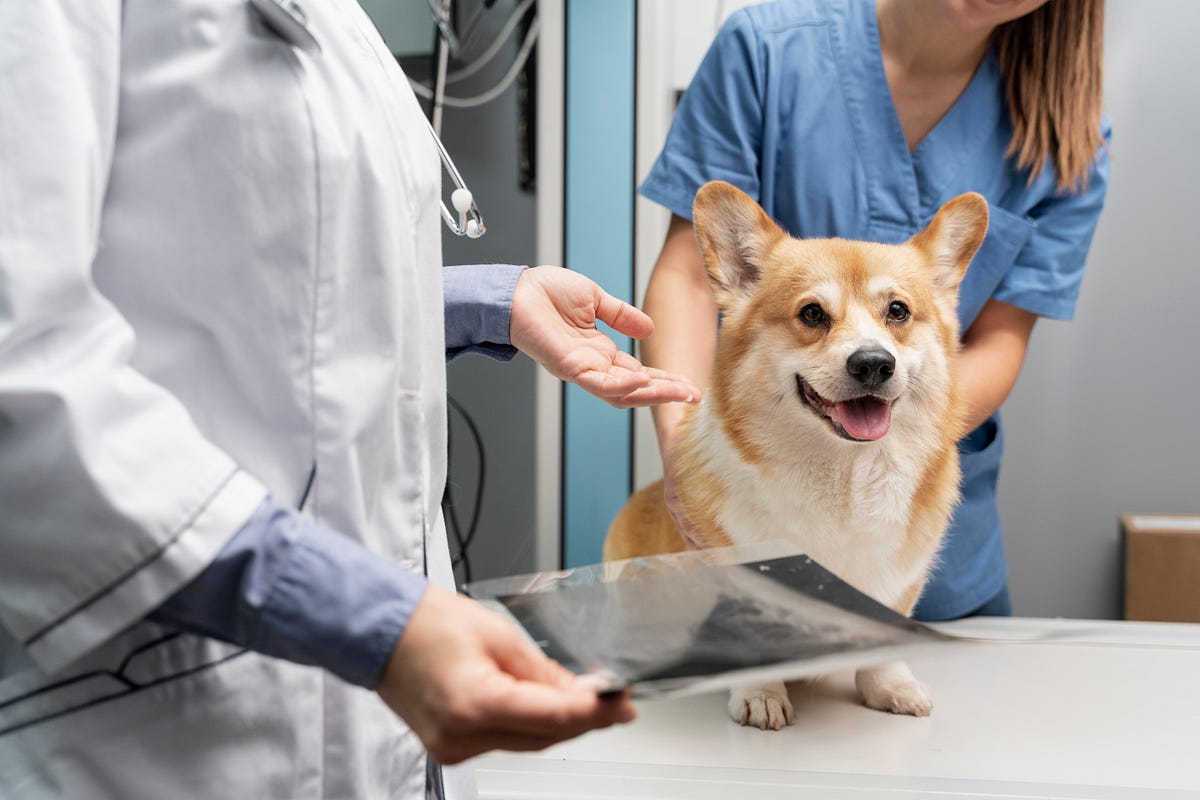
PRIORITIZING YOUR DOG’S HEALTH
Understanding the various causes behind your dog’s shaking is essential for any responsible pet owner.
While occasional shaking may be attributed to benign reasons such as excitement, cold, or minor stress, it is crucial not to dismiss this behavior casually.
Preventative Care is Your Friend
More serious causes of shaking can include medical conditions such as neurological disorders, poisoning, or pain from injuries. These health issues require immediate veterinary attention.
Regular veterinary check-ups play a pivotal role in maintaining your dog’s overall health and well-being. These visits can help identify and manage potential health problems before they become serious. By remaining vigilant and observant, you can detect changes in your dog’s behavior early, providing your pet with the best possible care.
Reduce Triggers and Offer a Comfort for Your Dog
Simple actions such as monitoring your dog’s shaking patterns, noting any additional symptoms, and understanding the context in which the shaking occurs can offer valuable clues to your veterinarian. Moreover, prioritizing your dog’s health involves creating a balanced and stable environment. Reducing stress, providing a nutritious diet, ensuring regular exercise, and offering a comfortable living space contribute significantly to your dog’s happiness and health. Knowledge is power, and the more informed you are about the possible reasons for your dog’s shaking, the better you can respond and seek appropriate care.
The Takeaway on Dog Shaking, Causes and Prevention
In conclusion, your attentiveness and proactive approach can make a substantial difference in your dog’s quality of life.
Remember, while some instances of shaking may be harmless, others require prompt medical attention.
By maintaining a keen awareness of your dog’s behavior and prioritizing their health, you guarantee a happier, healthier life for your furry companion.




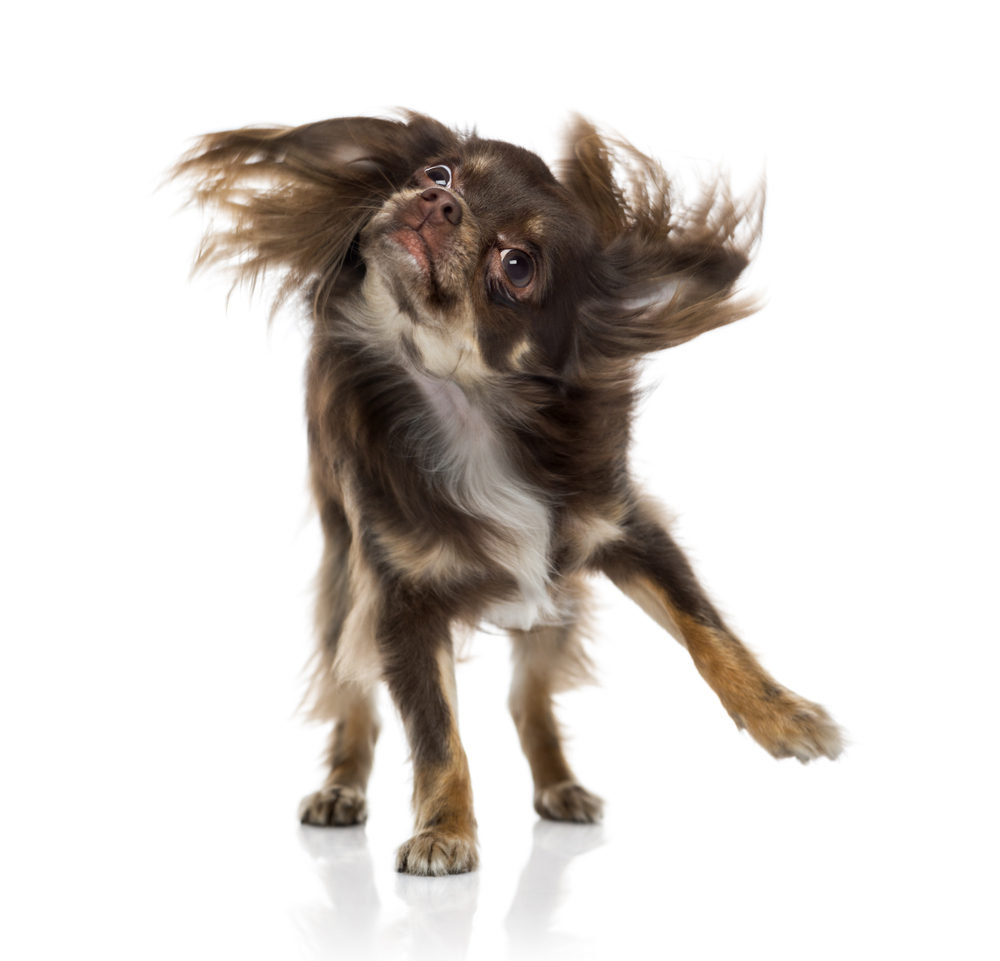

Comments